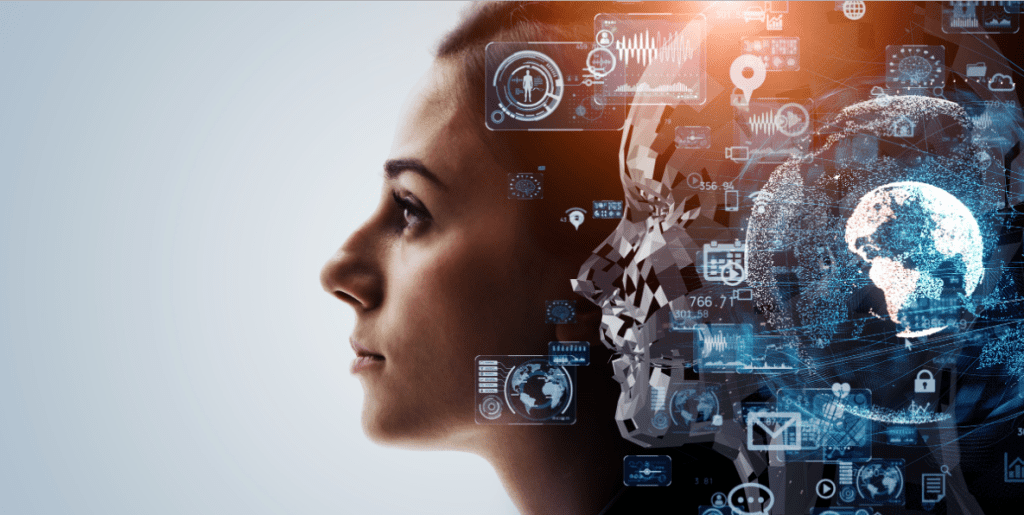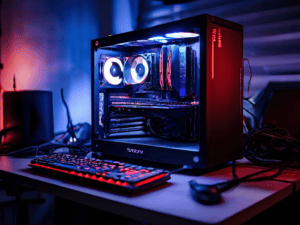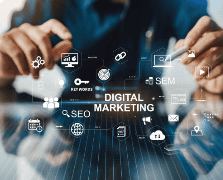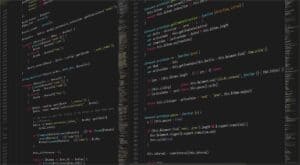
Artificial intelligence (AI) is a field of computer science that studies the design and development of intelligent computer systems that can act and think like humans. AI has been studied since the mid-20th century, with its first successful application to a problem in 1956. AI has since been used to solve problems in a variety of areas, including robotics, natural language processing, image and speech recognition, predictive analytics, and more.
AI has become increasingly prominent in recent years, with the development of self-driving cars, AI-powered virtual assistants, and other innovative technologies. AI is set to revolutionize the way we live, work, and interact with the world around us.
How does artificial intelligence work?
AI uses algorithms and data to try and replicate the cognitive functions of the human brain and is used in a variety of applications from facial recognition to medical diagnosis. AI works by analyzing a given data set, looking for patterns and correlations, and then using that data to generate an appropriate response.
AI can be used for predictive analytics, to help make decisions, or to identify trends in data. AI can also be used to automate certain tasks and processes. AI is an ever-evolving field and is being used in more and more industries to make the world a better place.
Why does artificial intelligence require large data sets for learning?
Artificial intelligence requires large data sets for learning because the more data it receives, the more accurate its predictions and decisions become. AI algorithms are able to make better predictions when they are given larger data sets because they can analyze patterns and trends in the data.
AI also needs to be trained on a large amount of data to recognize and identify patterns and anomalies. With larger data sets, AI is better able to recognize differences in data that may not be obvious to humans. This allows AI to make better decisions and predictions, which can be beneficial for businesses and organizations.
How is artificial intelligence different from human intelligence?
Artificial intelligence (AI) is the simulation of human intelligence processes by machines, especially computer systems. These processes include learning, reasoning, problem-solving, and decision-making. AI differs from human intelligence in that AI systems can be programmed to work quickly and autonomously, whereas humans are limited by the speed of their biological processes and must be taught to complete certain tasks.
AI also has access to a much larger dataset than humans can process, and can often make more accurate decisions based on this data. Ultimately, while both AI and human intelligence have their strengths and weaknesses, they can be used in tandem to create powerful solutions.
How can artificial intelligence assist human intelligence?
Artificial intelligence (AI) can assist human intelligence in numerous ways. AI can help humans to analyze vast amounts of data quickly and accurately, enabling us to make better decisions more quickly.
AI can also be used to automate mundane tasks, freeing up humans to focus on more important tasks that may require more complex problem-solving and creative thinking. AI can also be used to supplement human intelligence by providing additional insights and data to help humans make more informed decisions.
Finally, AI can help humans to make predictions about the future, helping to inform our decisions today.
How is Elon Musk’s Neuralink related to AI?
Elon Musk’s Neuralink is a brain-computer interface that aims to connect the human brain with artificial intelligence (AI). It is a technology that seeks to augment the capabilities of the human brain by linking it to a computer interface.
The goal of the technology is to allow the user to access information and control digital devices directly through their mind. This could potentially allow people to control computers and robots with their thoughts, as well as access large amounts of data quickly and easily.
It is an exciting technology that could revolutionize the way we interact with AI, allowing us to use our brains to control machines and access data in a much more efficient way.
What is the connection between AI and robotics?
AI and robotics are closely related fields, as AI is often used to control and power robots. AI is used to create algorithms, which robots can use to respond to their environment and make decisions. AI can also be used to interpret sensory data and make decisions based on that data.
Additionally, AI is used to help robots learn and develop new skills and capabilities. All of these capabilities together help to create powerful and advanced robots that can be used in various applications.
What are some of the weaknesses of artificial intelligence?
Artificial intelligence has the potential to be incredibly powerful, but there are some weaknesses to consider.
- One of the major weaknesses is that AI cannot always adapt to new or changing environments. AI is based on a set of rules and algorithms, so if the environment changes, the AI may not be able to recognize the change or adapt accordingly.
- Another weakness is that AI can be limited in its ability to recognize and respond to human emotions.
- AI lacks the ability to be creative and imaginative, which can be a limitation when it comes to problem-solving.
- Additionally, due to its reliance on large data sets for learning, AI can be vulnerable to bias and errors.
- Finally, AI can be expensive to develop and maintain.
Can Artificial Intelligence harm human beings?
Artificial intelligence has the potential to be both a benefit and a hazard to humanity. On one hand, AI can be used to automate tedious tasks, improve healthcare, and facilitate business operations. On the other, it can be used to manipulate data, control information, and create weapons with destructive capabilities.
AI can be programmed to act in ways that are potentially harmful to humans, and its potential to do so increases with advanced capabilities. It is important for us to be aware of the risks associated with AI and to create safeguards to help prevent any potential harm.
What does the future hold for AI?
The future of AI is very exciting and full of potential. AI is being used in many different ways, from improving healthcare to helping with business operations. As technology continues to evolve, AI will become more powerful and intelligent, allowing us to do more with less. AI can also help us make better decisions by analyzing data and predicting outcomes.
AI also has the potential to revolutionize the way we interact with our environment, from aiding in autonomous transportation to helping us understand our world better. Ultimately, AI has the potential to make our lives easier, more efficient, and more secure.




